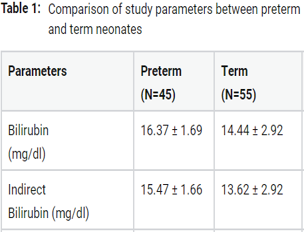Abstract
Neonatal hyperbilirubinemia is the most frequently occurring disorder in neonates. Phototherapy is the most common treatment strategy practiced routinely in the management of neonatal unconjugated hyperbilirubinemia. Reviews on electrolyte variations post phototherapy are highly variable. Therefore our study was aimed to evaluate the effect of phototherapy on calcium, sodium, potassium, magnesium and liver enzymes in physiologically hyperbilirubinemic neonates before and after phototherapy. The study was carried out on 100 (45 preterm, 55 term) hyperbilirubenimic neonates who underwent phototherapy. The overall prevalence of hypocalcemia was found to be 7%, none in preterm, 12.73% in term, 12.12% in males, 13.64% in females, 2.56% in low birthweight and 11.11% in normal birthweight neonates. The incidence of hypomagnesemia was found to be 4.45% in preterm, 7.27% in term, 5.2% in males, 13.64% in females, 5.13% in low birthweight and 7.4% in normal birthweight neonates. We found the incidence of hyponatremia to be 12%, 11.11% in preterm, 12.73 % in term, 12.12% in males, 18.6% in females, 5.13% in low birthweight and 14.8% in normal birthweight neonates. Monitoring of serum calcium and electrolyte levels in neonates undergoing phototherapy will help to identify hypocalcemia and electrolyte imbalances to prevent complications.
Full text article
Authors

This work is licensed under a Creative Commons Attribution-NonCommercial-NoDerivatives 4.0 International License.

